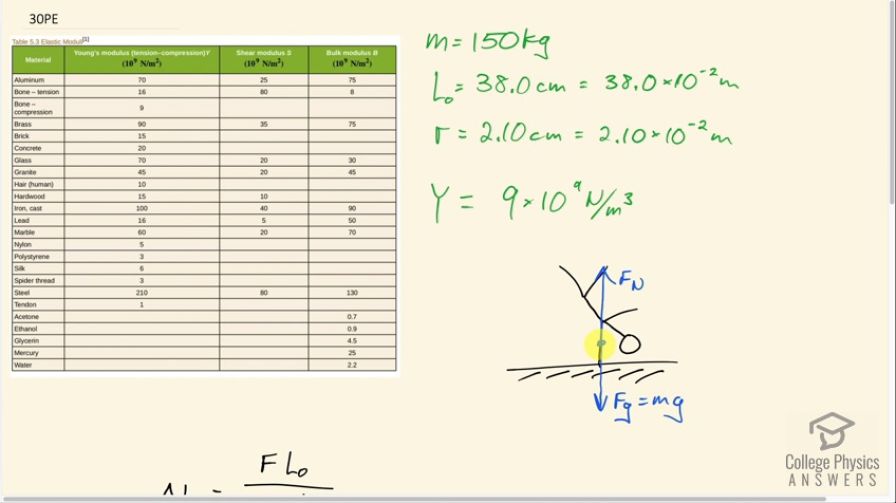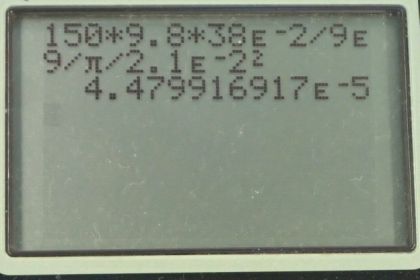Question
During a wrestling match, a 150 kg wrestler briefly stands on one hand during a maneuver designed to perplex his already moribund adversary. By how much does the upper arm bone shorten in length? The bone can be represented by a uniform rod 38.0 cm in length and 2.10 cm in radius.
Final Answer
Solution video
OpenStax College Physics for AP® Courses, Chapter 5, Problem 30 (Problems & Exercises)

vote with a rating of
votes with an average rating of
.
Calculator Screenshots
Video Transcript
This is College Physics Answers with Shaun Dychko. A 150 kilogram wrestler is doing a handstand and there's going to be a force normal upwards due to the ground and a force of gravity downwards, in other words, this is a compression force on the bones and the arm and we need to find out what the Young's modulus is for bone under compression and that is this line here and so we have 9 times 10 to the 9 newtons per meter squared is the Young's modulus. The radius of the arm bone is 2.1 centimeters and we take this time here when we are writing down the stuff that we know to take care of unit conversion so we write 2.10 times 10 to the minus 2 meters. The original length, L naught, of the arm bone is 38 centimeters which is 38.0 times 10 to the minus 2 meters. Okay! So our formula for the change in length of this arm bone is the compression force multiplied by its original length divided by Young's modulus times the cross-sectional area of the bone. The area's gonna be πr squared because the bone is circular we assume and the compression force is equal to gravity, mg. So we substitute mg in place of F and we substitute πr squared in place of A and then plug in numbers. (let's change that to a square there) We have 150 kilograms times 9.80 newtons per kilogram times 38.0 times 10 to the minus 2 meters— original length— divided by the Young's modulus for bone under compression times π times 2.10 times 10 to the minus 2 meters—radius—squared giving 4 times 10 to the minus 5 meters is the amount of compression of the arm or the change in length of the arm, in other words, which is a very small amount.
